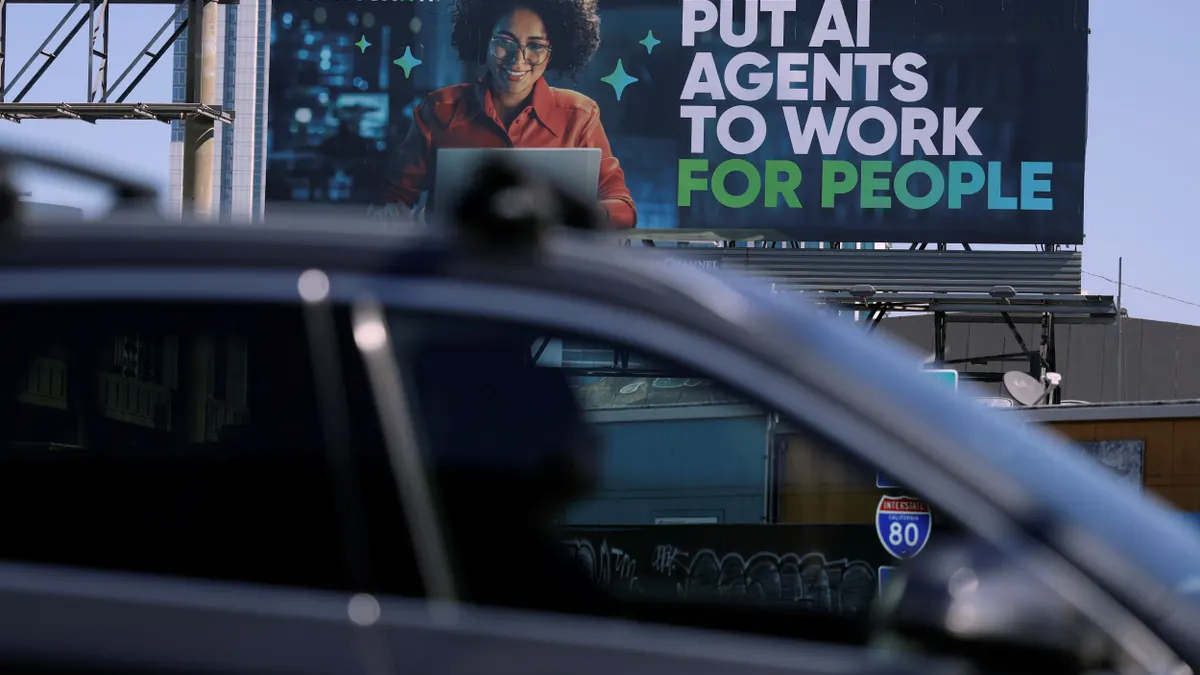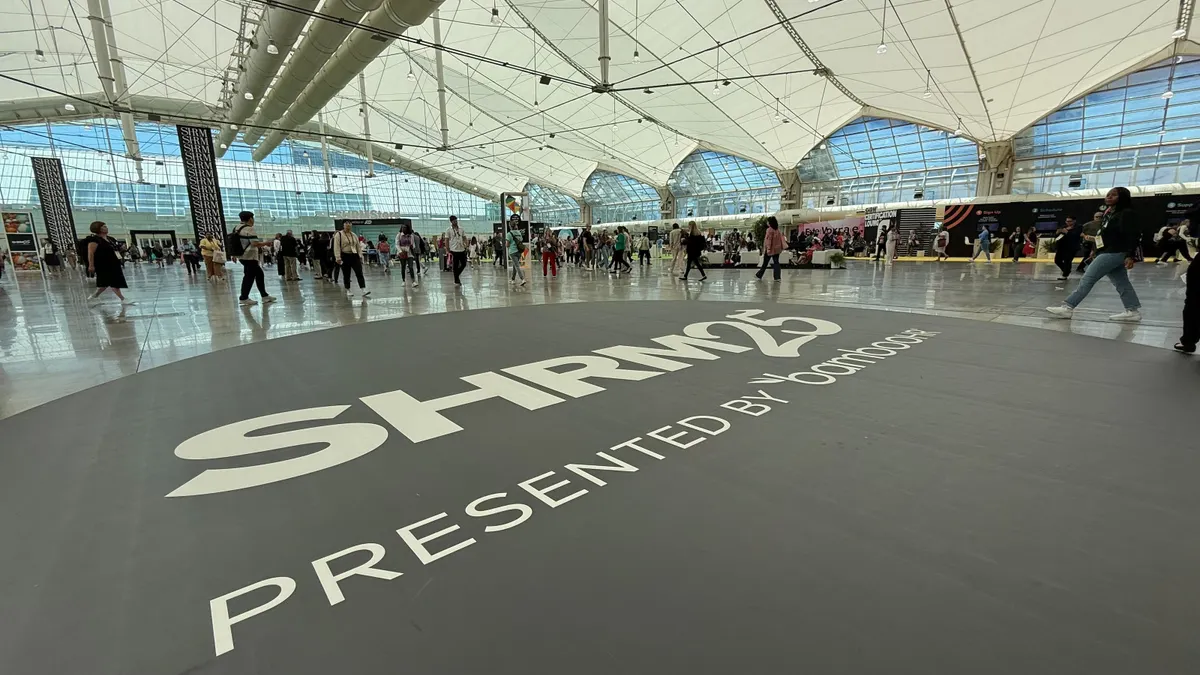What does it mean to be a stranger in your own home? Researchers at think tank Coqual sought to answer this question regarding the Asian and Pacific Islander experience in the United States. Researchers found that, on average, 32% of Southeast Asians, 37% of East Asians and 38% of South Asians experience racism at work.
Research for the report, “Strangers at Home,” was originally gathered right after lockdown ended in response to an uptick in anti-Asian sentiment that had its roots in COVID-19 conspiracy theories.
Now, in 2025, those same racist and anti-immigrant feelings still linger, according to Emilia Yu, director of research at Coqual. “The interesting thing about collecting survey data is that you only capture a moment in time. That showed us very obviously the cost of the moment — the cost of what we saw in the headlines,” Yu told HR Dive.
Those results showed the toll that fear had taken on Asian and Pacific Islander workers.
“Two-thirds of our Asian respondents said that their mental health took a dive. Almost half said the same thing about their physical health. As a result of these headlines, people are having trouble focusing at work, being productive and feeling safe in commuting. Their relationships are suffering,” Yu continued. And even though the “moment” has passed, she said, the bell can’t be unrung.
Additionally, “the political landscape did not shift enough in the opposite direction to make people feel more safe or to make people realize that, you know, these kinds of acts are unacceptable,” they said.
In honor of Asian American and Pacific Islander Heritage Month 2025, HR Dive asked Yu, a key contributor to the report, about standout findings from the Strangers at Home report that still resonate in this current sociopolitical climate — as well as pro-tips for HR professionals and employers looking to support AAPI workers.
Key findings for HR: Microaggressions, harmful stereotypes
While Black and Latino talent reported facing workplace discrimination more often, data showed that Asian workers experienced distinct forms of racism that their Black and Latino peers did not necessarily experience.
For one, they had the “perpetual foreigner” experience: colleagues assume that Asian workers weren’t born in the U.S., don’t believe that an Asian individual was born in the U.S. or make comments about the state of one’s English proficiency.
Asian workers also experienced “overvalidation,” which goes hand-in-hand with the model minority myth. This looks like non-Asian workers assuming Asian individuals are innately good at math and science, inherently harder working or automatically smart because of their race.
“In some ways, that does sound good on the surface,” Yu said. “But if you then don't meet that set of contrived expectations, often the penalties are a lot harsher.”
Along with facing microaggressions from co-workers, Asian workers also fight against internal community pressures regarding speaking up and standing out.
“We’re told not to stick out, not bring attention to ourselves… It’s the group, the family, the community that is more important than the individual,” one mixed Filipino worker told Coqual.
This echoes what one person said to HR Dive regarding her experiences as an Asian-American woman in STEM. Another Asian American tech employee who spoke to HR Dive emphasized that it’s crucial for employers to not see or treat the Asian diaspora as a monolithic community.
The “Strangers at Home” report also highlights this need, especially in regard to Pacific Islanders: Despite being 0.4% of the population, Native Hawaiians and other Pacific Islanders make up 1.6 million members of the U.S.’s population. This includes:
- People from Polynesia, which includes Tonga, Easter Island and New Zealand,
- People from Melanesia, which includes 2,000 islands near Indonesia, New Guinea and New Caledonia, and
- People from Micronesia, which includes the Marshall Islands, Palau/Belau and Guam.
Many Pacific Islanders expressed to Coqual researchers that they don’t want to be lumped in with Asian Americans or even be considered Asian; “erasure” was a recurring theme.
“They want to have their own identities, because they very much have their own separate histories. They don't want their Pacific Islander roots to be dismissed or ignored,” Yu said, adding that some people may possibly want their own separate employee resource groups, “or at the very least, at work, have their identities acknowledged as separate from Asian.”
If an employer has an AAPI ERG, they said, “the ‘PI’ part of that should matter just as much as the ‘AA’ part.”
Action items for HR: Audit, awaken, act
Coqual’s main recommendation was for business leaders to audit its DEI programs. And while demographic data can be helpful, researchers said, it’s “not sufficient to get a full picture of employee access to opportunities.”
To “awaken” one’s workforce in Coqual’s terms means to educate. One key recommendation was to “cultivate intraracial and intergenerational solidarity.”
This recommendation was made in response to data where Asian and Asian American workers voiced not feeling supported or having enough mentorship opportunities. This tip is also sound in the wake of increased scrutiny around employee resource groups from President Donald Trump’s administration, which claims that ERGs are illegally exclusionary.
Awakening can also look like educating managers about anti-Asian racism as well.
And finally, “acting” involves not just investing in AAPI programming, but also responding and being mindful of anti-Asian violence. One explicit recommendation is to “respond to anti-AAPI violence,” which Coqual calls a “baseline” for employers.
Previously, workplace experts and Asian advocates have discussed the veritable need for employers to have worker safety plans due to the uptick in COVID-fueled, anti-Asian violence, especially since Stop AAPI Hate data shows that these hate crimes happen during worker commutes.
Similar to Coqual’s advice around highlighting Pacific Islander heritage — and not letting people feel lumped into categories unnecessarily — Yu recommended disaggregating demographic data where possible.
“We're talking about a group that's from 50-plus ethnic backgrounds. Some have been in the U.S. for a few years. Some have been in the U.S. for generations. And as important of a term ‘AAPI’ is from an organizing and political power perspective, we can't forget about how it can also obscure a lot of important nuance,” Yu said.
Correction: A previous version of this story misstated Yu's role in the research for the "Strangers at Home" report.






















